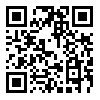Volume 9, Issue 4 (12-2019)
پژوهشهاي سياسي جهان اسلام 2019, 9(4): 227-254 |
Back to browse issues page
1- PhD Student in Political Studies of the Islamic Revolution, Tehran, Iran, Shahed University
2- Associate Professor, Department of Political Science and Islamic Revolution Studies, Tehran, Iran, Shahed University , z_ghafari@yahoo.com
3- Associate Professor, Department of Political Science and Islamic Revolution Studies, Tehran, Iran, Shahed University
2- Associate Professor, Department of Political Science and Islamic Revolution Studies, Tehran, Iran, Shahed University , z_ghafari@yahoo.com
3- Associate Professor, Department of Political Science and Islamic Revolution Studies, Tehran, Iran, Shahed University
Abstract: (1757 Views)
After the victory of the Islamic Revolution, the leaders of the Revolution established institutions for the maintenance, consolidation and continuation of the Islamic Revolution due to the lack of their confidence in the structures of the former system. Their aim was to reject rival ideologies, to propagate the ideology of the Islamic Revolution in a sustainable manner and to fight against internal and external counter-revolutionary forces. One of these institutions is Basij Mostazafan (Mobilization), which was formed following the decree of Imam Khomeini on November 26, 1979. Given that the institutions are the output of the coordination between structures and agents, the institution of Basij is the convergence of structured contexts and social actors. Therefore, the main question of the present research is what are the structural backgrounds and effective factors influencing the formation of the mobilization institution? By using structural theory and document analysis method, the authors conclude that the Iranian mobilization (Basij) was formed as a result of co-operation in the fields of security, politics, culture, society and economy as well as activists such as the the Islamic Revolutionary Guard Corps (IRGC), revolutionary subgroups and characters such as Imam Khomeini, Javad Mansouri, Amir Majd, and other indirect actions of the leaders and the institutions of the Revolution.
Type of Study: Research |
Subject:
Special
Received: 2019/09/15 | Accepted: 2019/12/18 | Published: 2020/07/8
Received: 2019/09/15 | Accepted: 2019/12/18 | Published: 2020/07/8
| Rights and permissions | |
 |
This work is licensed under a Creative Commons Attribution-NonCommercial 4.0 International License. |


